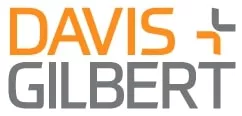- with Finance and Tax Executives and Inhouse Counsel
- with readers working within the Automotive, Banking & Credit and Insurance industries
The Bottom Line
- The FTC's historic judgment against Amazon comes as regulators reinvigorate their focus on fraudulent practices, subscriptions and the technology sector.
- Companies of all sizes and prominence should closely review their subscription enrollment and cancellation policies in light of this ongoing regulatory scrutiny.
- While the FTC is currently pursuing actions in this space under existing laws (ROSCA), it is leaving open the possibility of further rulemaking to regulate subscription-based companies.
In 2023, the Federal Trade Commission (FTC) filed a complaint against Amazon alleging that the company engaged in a variety of "dark patterns" in violation of both the Restore Online Shoppers' Confidence Act (ROSCA) and Section 5 of the FTC Act. These practices were said to trick consumers into enrolling in their Prime membership program. As part of an amended complaint, the FTC also personally named three senior Amazon executives, claiming that they either chose not to act, or slowed or rejected user experience changes designed to reduce the potential for deception.
The specific challenged practices included:
Failure to Disclose Material Terms
- Collecting consumers' credit card information before disclosing Prime's material subscription terms and failing to obtain the consumer's express informed consent to those terms.
Obstruction Techniques
- Making the option to decline enrollment difficult to locate and overshadowing it with a prominent "Get FREE Two-Day Shipping" button.
- Forcing consumers who already expressed an intent to cancel to view marketing and reconsider options.
"Misdirection"
- Presenting asymmetric choices that made it easier to enroll in Prime than not (e.g., using a less prominent-looking link to decline Prime; making it easier to abandon an attempted Prime cancellation than to complete it).
- Using attractors, like animation and a contrasting blue color and text, to direct consumers to options other than cancellation (e.g., drawing attention to "remind me later" and "keep my benefits" options rather than "continue to cancel").
"Sneaking"
- Hiding or disguising relevant information, including Prime's price and the automatic renewal feature.
"Confirmshaming"
- Using design elements that used emotive wording around Amazon's disfavored option in an effort to guilt consumers into proceeding with the favored option (e.g., "No thanks. I like full price").
The Settlement Details
Days into what was expected to be a monthlong trial, the FTC secured a historic monetary judgment of $2.5 billion. Amazon is required to pay a $1 billion civil penalty (the largest in a case involving an FTC rule violation and the third civil penalty obtained by the FTC under ROSCA) and $1.5 billion in consumer redress (the second-highest restitution award ever obtained by an FTC action).
The settlement order also requires Amazon to cease their unlawful practices and make changes to the Prime enrollment and cancellation schemes by:
- Including a clear and conspicuous button for consumers to decline Prime (e.g., removing the "No, I don't want Free Shipping" button);
- Including clear and conspicuous disclosures about Prime's material terms during the Prime enrollment process;
- Creating an easy, non-time-consuming, non-costly way for consumers to cancel Prime. Amazon customers should be able to cancel their goods or services using the same mechanism they used to sign-up; and
- Paying for an independent, third-party supervisor to monitor Amazon's compliance with the consumer redress distribution process.
The claims against Amazon executive Russell Grandinetti were dismissed pursuant to a separate stipulation, but executives Neil Lindsay and Jamil Ghani are included in the current settlement.
Despite the unprecedented nature of some of the FTC's settlement provisions, including the astronomical settlement amount and the requirement to engage a third-party supervisor to monitor compliance, it is worth noting that the settlement order leaves room for the FTC's promulgation of an amended rule or regulation governing negative options or subscriptions.
More specifically, the order notes that to the extent the FTC promulgates any such amended rule or regulation, the requirements of that rule may supersede certain of the requirements under the order. In the wake of the vacation of the updated proposed Negative Option Rule, the FTC may be signaling that it is willing to dedicate further resources to reinvigorating subscription regulation even while it is already aggressively bringing cases under existing laws such as ROSCA.
Be on the Lookout
This major settlement should serve as a wake-up call for all companies that utilize negative option features. In a press release outlining the details of the settlement, FTC Chairman Andrew N. Ferguson noted that the FTC is "committed to fighting back when companies try to cheat ordinary Americans out of their hard-earned pay."
Companies should take the time now to audit their practices ahead of an upcoming wave of renewed regulation, including taking a close look at the following steps in their consumer journeys:
Are material terms are accurately represented and clearly disclosed to consumers during the enrollment process before a consumer's billing information is collected?
Before enrolling, consumers should clearly understand what they are consenting to. This includes knowing whether a free trial will convert to a paid plan, any deadlines to prevent or stop a charge, any related costs and the frequency of those costs, any costs that the consumer will incur if they decline to enroll in any program, and how to prevent or stop charges.
Do consumers need to provide express informed consent prior to enrolling in a program?
Even if all material terms are clearly, conspicuously and accurately disclosed to consumers, consumers should provide express informed consent to these disclosures before they are charged. The mechanism to provide express informed consent should clearly indicate what specific subscription program the consumer is signing up for.
Do consumers have simple mechanisms to cancel, and/or to stop recurring charges before being billed for future billing cycles (or in advance of material changes to the program, such as price increases)?
Simple cancellation mechanisms must be in place that are not difficult, time-consuming or costly. At a minimum, companies should provide consumers mechanisms to cancel in the same medium that they provided their initial consent (i.e., in-app or online if the consumer signed up that way).
The content of this article is intended to provide a general guide to the subject matter. Specialist advice should be sought about your specific circumstances.



